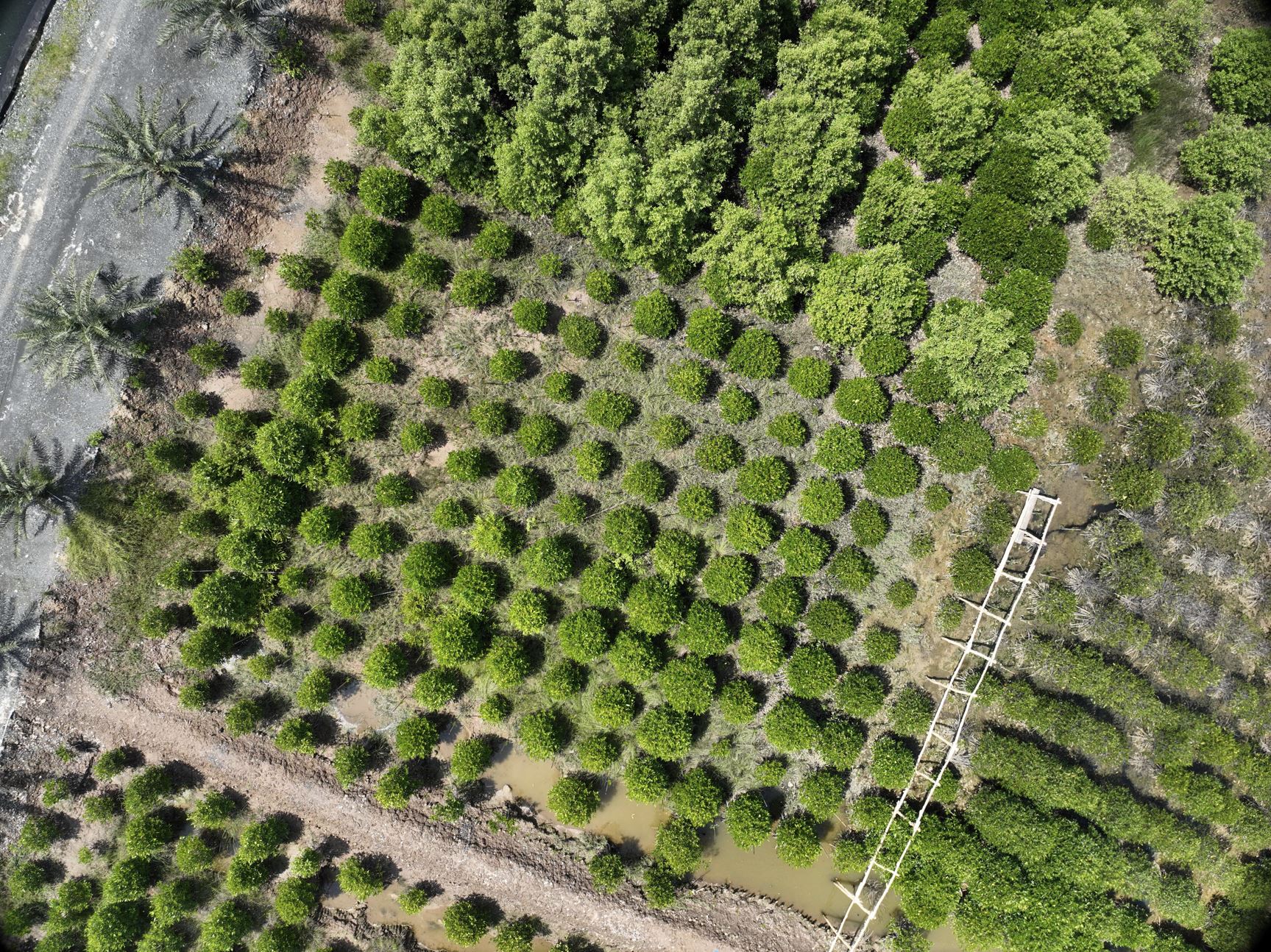The TOMGOXY Zero project marks a pioneering step in demonstrating the potential of integrated mangrove–aquaculture systems as a scalable nature-based solution.…
Mangrove-aquaculture integration
Our mangrove-aquaculture system is an innovative approach that combines shrimp farming with ecosystem restoration. Mangroves create a natural filtration system, that processes nutrient-rich runoff from the ponds, while also providing coastal protection, habitat for (marine) life, and carbon sequestration. This model shows that mangrove restoration and sustainable aquaculture go hand in hand — benefiting both nature and local communities.

Request info
Contact
Want to know more about Mangrove-aquaculture integration?
With increasing experience in integrating mangroves into aquaculture systems, we are now working to refine and scale this model as a nature-based solution for both food production and ecosystem restoration. In conventional shrimp farming, nutrient-rich wastewater is often discharged untreated, contributing to coastal degradation. By introducing mangroves into the design of aquaculture farms, we turn this effluent into a resource — using mangroves to naturally filter and process the excess nutrients.
In 2022, we began piloting this approach in Vietnam, testing different mangrove species and planting configurations to assess their ability to thrive in aquaculture conditions. These pilot systems are designed to mimic natural processes: mangroves absorb nutrients, stabilize sediments, and contribute to carbon sequestration, while coexisting with productive aquaculture ponds.
The goal is to develop a replicable and cost-effective model that improves farm performance, reduces environmental impact, and restores degraded coastal zones. The knowledge and data generated from these pilots will inform how we scale — both on commercial farms and in larger infrastructure or conservation projects — where mangroves can serve as a critical buffer in climate adaptation and biodiversity protection.
